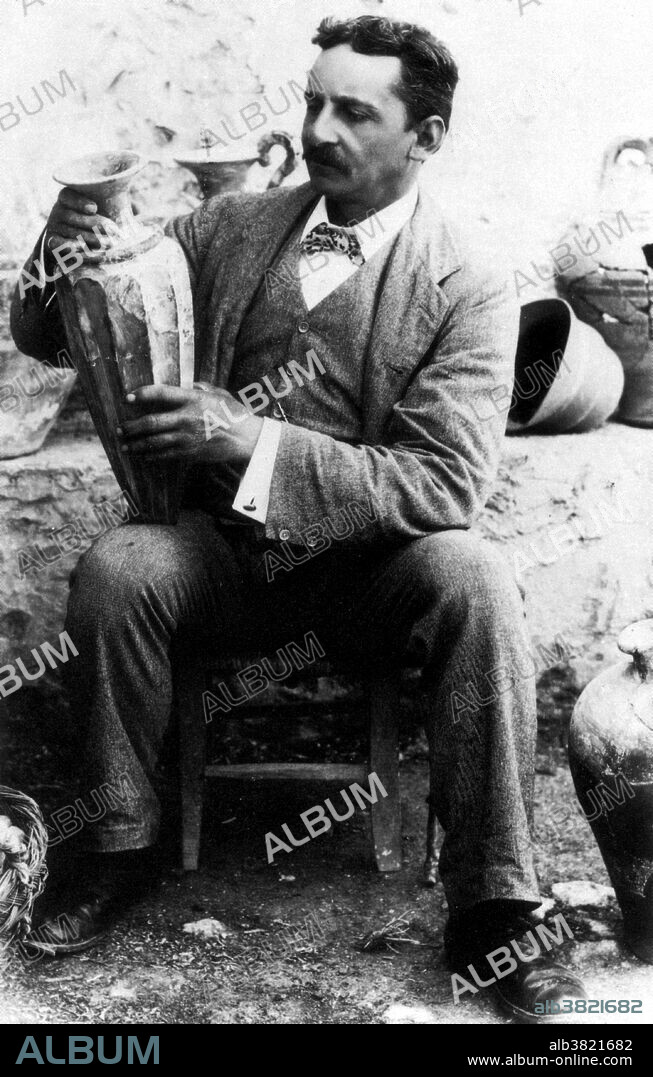alb3821682
Arthur Evans, English Archeologist

|
Zu einem anderen Lightbox hinzufügen |
|
Zu einem anderen Lightbox hinzufügen |



Haben Sie bereits ein Konto? Anmelden
Sie haben kein Konto? Registrieren
Dieses Bild kaufen

Titel:
Arthur Evans, English Archeologist
Untertitel:
Siehe automatische Übersetzung
Arthur John Evans (July 8, 1851 - July 11,1941) was an English archeologist. He and Heinrich Schliemann were pioneers in the study of Aegean civilization. Schliemann had planned to excavate at Knossos, but died before fulfilling that dream. Evans bought the site, employed a staff of local laborers, and began work in 1900. Within a few months they uncovered a substantial portion of what he called the Palace of Minos. The small ruin of Knossos spanned 5 acres and the palace had a maze-like quality that reminded him of the labyrinth described in Greek mythology, so he named the civilization Minoan. By 1903, most of the palace was excavated, bringing to light an advanced city containing artwork and many examples of writing. During the excavation he found 3,000 clay tablets, which he transcribed and organized, publishing them in Scripta Minoa. He perceived that the scripts were two different and mutually exclusive writing systems, which he termed Linear A and Linear B. Despite decades of theories, Linear A has not been convincingly deciphered, nor even the language group identified. He died in 1941 at the age of 90.
Persönlichkeiten:
Bildnachweis:
Album / Science Source / New York Public Library
Freigaben (Releases):
Model: Nein - Eigentum: Nein
Rechtefragen?
Rechtefragen?
Bildgröße:
3000 x 4704 px | 40.4 MB
Druckgröße:
25.4 x 39.8 cm | 10.0 x 15.7 in (300 dpi)
Schlüsselwörter:
ARCHAEOLOGIE • ARCHÄOLOGIE • ARCHÄOLOLGIE • BERÜHMT • BERÜHMTE PERSÖNLICHKEIT • BRONZEZEIT • ERDARBEITEN • EUROPAEER (F M) • EUROPAEER • EUROPÄER (F M) • EUROPÄER • EUROPÄISCH • GREECE • GRIECHENLAND • MANN • MYCENAEAN • NOTABEL • OSTRAKON • PERSON • PERSöNLICHKEITEN • PERSÖNLICHKEITEN • PROMINENZ • RUINE • RUINEN • TONSCHERBE • ZERFALL
 Pinterest
Pinterest Twitter
Twitter Facebook
Facebook Link kopieren
Link kopieren Email
Email
